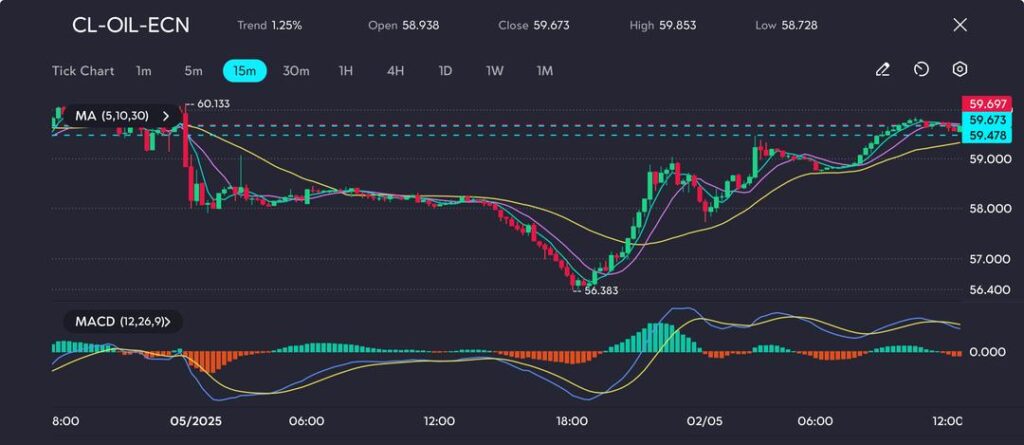
Oil prices are once again in the spotlight as markets respond to shifting global dynamics. Hopes for progress in US-China trade talks have helped lift investor sentiment, while renewed geopolitical tensions and uncertainty around future OPEC+ output continue to shape expectations. With both demand outlook and supply decisions hanging in the balance, the crude oil market remains highly sensitive to economic and political signals.
Crude oil prices advanced on Friday amid growing optimism over easing trade tensions between the United States and China.
WTI crude climbed 0.8% to settle at USD 59.74 per barrel, while Brent crude edged up by 49 cents to close at USD 62.62.
Both benchmarks built on Thursday’s gains, recovering from midweek losses triggered by concerns over potential changes in OPEC+ supply policy.
Investor confidence received a boost after China’s Commerce Ministry confirmed it was assessing a US proposal for tariff negotiations, raising hopes for progress in resolving the long-running dispute.
With fears of a global demand slowdown briefly easing, oil markets found renewed upward momentum.
WTI crude staged a robust rebound from a recent low near USD 56.38, closing in on the USD 59.67 mark.
Following a sharp pullback from USD 60.13, prices stabilised before staging a strong upside reversal.
The short- to medium-term moving averages (5, 10, 30) have shifted into bullish alignment, with the price now trading firmly above these key technical indicators.

The MACD (12,26,9) supports the bullish outlook, showing a clear crossover and expanding green histogram bars.
However, a slight flattening in the slope suggests potential for short-term consolidation.
Immediate resistance sits between USD 59.85 and USD 60.13—a break above this zone could pave the way for a retest of the USD 61.00 level.
Despite the current momentum favouring bulls, the market may pause after such an aggressive rally.
Meanwhile, geopolitical risks re-emerged after US President Donald Trump warned of secondary sanctions on countries purchasing Iranian oil, following a collapse in nuclear negotiations with Tehran.
This move aligns with Washington’s ongoing maximum pressure strategy, which has previously helped underpin oil prices by tightening supply expectations.
However, upside potential remains constrained. According to Reuters, Saudi Arabia appears hesitant to extend existing output cuts, even as prices remain below the kingdom’s preferred range.
The upcoming OPEC+ meeting on 5 May will be crucial, with eight member nations expected to finalise plans for June’s production levels.
Some participants are reportedly pushing for a second consecutive output increase, while non-OPEC production continues to climb, posing challenges for supply management.
As China’s trade policy shifts and OPEC+ production talks loom, crude oil markets are likely to remain sensitive to fresh headlines.
While the recent rally has cleared initial resistance, sustained gains will require greater clarity from both Washington and Riyadh.
Traders should watch the USD 60.13 level closely for confirmation of a bullish continuation in the near term.
Click here to open account and start trading.